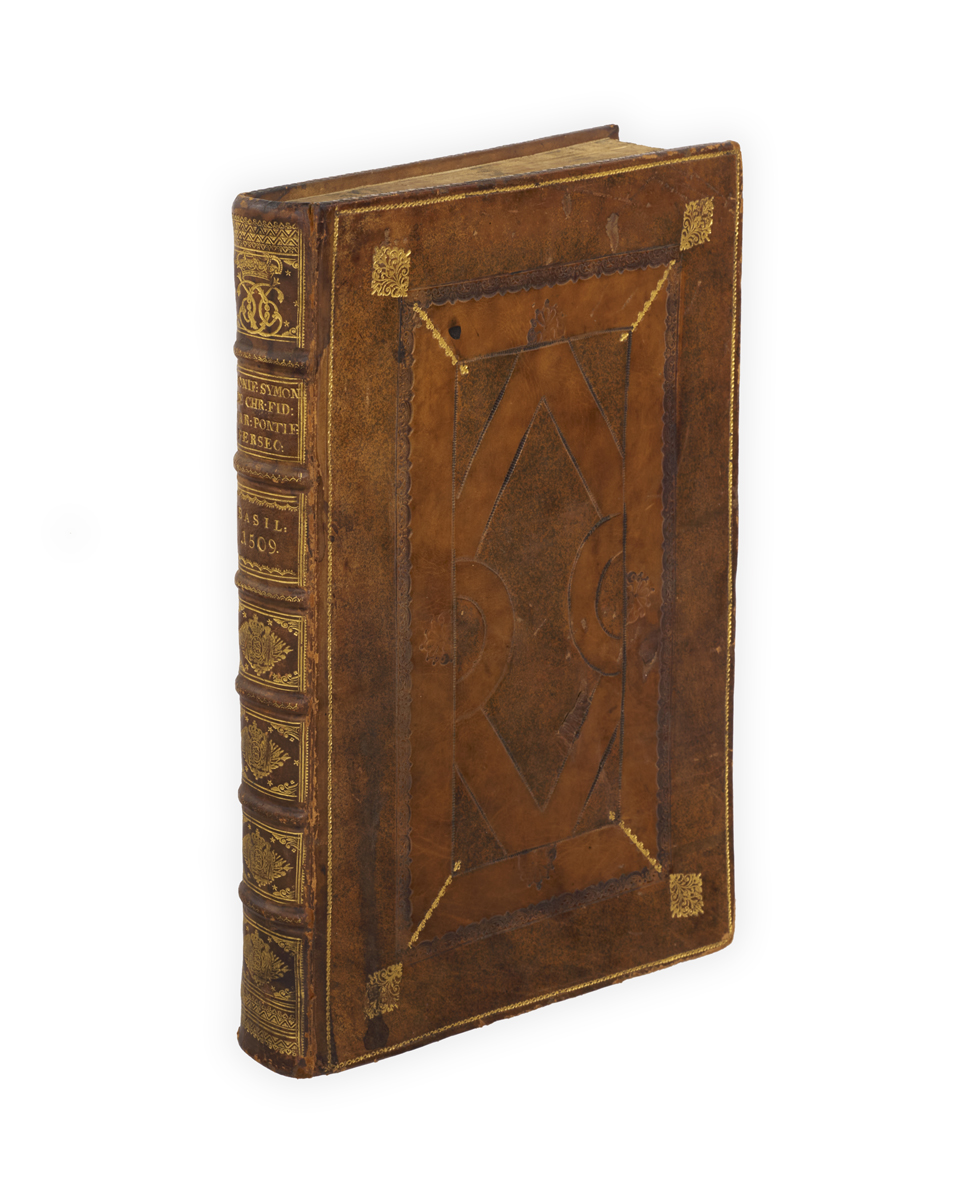
POSSIBLY THE FIRST MASQUE WITH MOVEABLE SCENERY
NABBES, Thomas.
Microcosmus. A Morall Maske, presented with generall liking, at the private House in Salisbury Court, and heere set down according to the Intention of the Authour …
London, Printed by Richard Oulton for Charles Greene … 1637.
Small 4to, pp. [54], wanting the initial blank; edges slightly browned but a very good copy, in nineteenth-century half blue morocco, endpapers renewed.

Added to your basket:
Microcosmus. A Morall Maske, presented with generall liking, at the private House in Salisbury Court, and heere set down according to the Intention of the Authour …
First edition of an allegorical morality play (the Elements, the Senses, Love, Fear, Hope, Melancholy, et al.) which ‘may be the first English masque presented in a theatre with moveable scenery’ (Pforzheimer Catalogue).
Completed during the seventeenth-month plague-closure of the theatres from May 1636 to October 1637, Microcosmus is ‘the offspring of a morality play and a Jonsonian court masque … it has much in common with Middleton and Rowley’s World Tossed at Tennis, and even more with Ford and Dekker’s Sun’s Darling’, another ‘moral masque’ (Bentley).
In Microcosmus, ‘Nabbes chronicles the temptations of an Everyman figure, Physander, who is led astray by Sensuality and the personified five senses before being rescued by Temperance. In the climactic trial scene Physander acquits himself against Sensuality and Malus Genius, who are banished to hell’ (Oxford DNB). Unlike a regular masque, there is a readily identifiable plot, and while some characters remain abstractions, the senses take the form of a chambermaid (sight), usher (hearing), huntsman (smell), cook (taste), and ‘Ladies Gentleman-usher’ who ‘kill[s] Spiders for her Monkey’ (touch).
In the form it is printed here, the masque requires extensive stage machinery: as the play progresses five scenes are ‘discovered’, set within a ‘Front’, presumably a proscenium arch of some sort, probably with a pair of shutters (‘Love and Nature returne to the Scene, and it closeth’). Recent scholarship has sided with Bentley in agreeing, against expectation, that such a complicated staging may indeed have been possible even on a small private stage such as Salisbury Court; on the other hand, the instructions may represent the unrealised or partly unrealised ‘intention of the Author’ as mentioned on the title-page.
STC 18342; Greg 514; Pforzheimer 756. See Astington, ‘The “Messalina” Stage and Salisbury Court Plays’, in Theatre Journal, 43:2 (1991), pp. 141–156.

